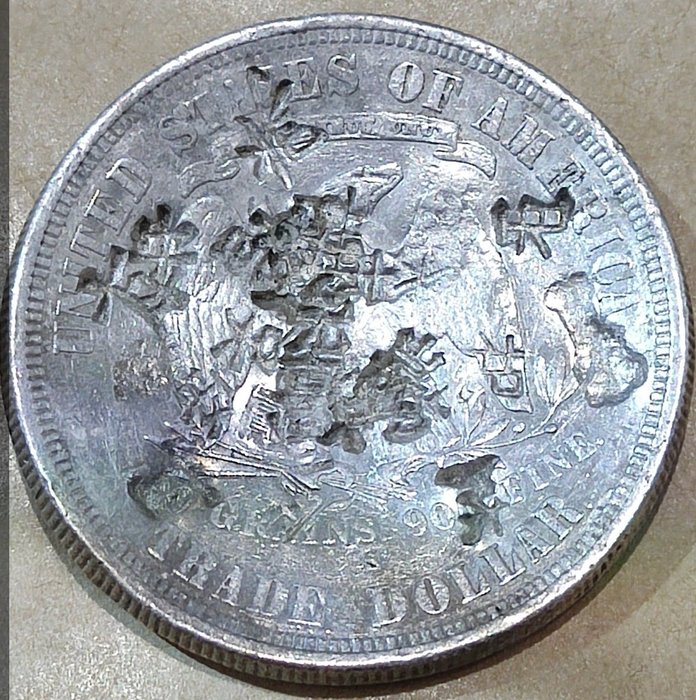
Estados Unidos. 12 x 1/2 Dollar Comemorative, unc, 1963-2008 , unz.
N.º 82550699

N.º 82550699

United States. Trade Dollar 1878-S with Chinese chop marks (No Reserve Price)
Few American coins are as interesting as the United States Trade dollars. The list of unique features of this dollar is long. To begin with, they were slightly larger than the standard silver dollar, and that was for a good reason. Trade Dollars were issued in order to help expand trade with China, whose merchants wanted silver coins, not gold. Iitially the Chinese did not accept them, as the Trade Dollar was not legal tender in the USA, making them the only coin in U.S. history that circulated in significant numbers at less than face value.
American merchants had been interested in trade with China since at least the late 1700s. When commercial activity in San Francisco increased with the discovery of gold, many merchants in San Francisco turned their eyes toward the Orient as a source for silks, tea and other products. The problem was having a coin the Chinese would accept.
The Trade dollar was a classic case of killing two birds with one stone. The United States had too much silver, and with the Trade Dollar being larger than a standard silver dollar it would use more silver which was fine with everyone concerned. Also beneficial was the fact that once the silver left the United States it would present no more threat to the domestic price. Finally, American merchants were happy that they would no longer have to pay extra to have their U.S. coins converted into Mexican silver pesos, which the Chinese eagerly accepted.
The idea of a Trade dollar clearly had advantages for almost everyone, but the first hurdle was getting the Chinese to accept the new coins. As lovers of silver, the Chinese carefully studied the first shipment of Trade dollars, and much to the relief of those sponsoring these coins, approved them. Ultimately, however, acceptance of the Trade dollar in China would not be universal, and that meant the coin was not as successful as some had hoped.
When a Trade dollar reached the ports in China and accepted by a merchant at its full value, he would "chop" the coin by stamping it with his unique Chinese character. As a coin changed hands from one merchant to another, it could receive a number of different chops from the various merchants.
Collectors today have come to appreciate the chop marked dollar for the fascinating story that it tells. Someone who can read the Chinese characters on a Trade dollar can trace the travels of the coin back in the 1870s from one merchant to another in a Chinese port. That makes them fascinating to study, as the characters are each different, representing a certain business at the time.
Cómo comprar en Catawiki
1. Descubre algo especial
2. Haz la puja más alta
3. Paga de manera segura